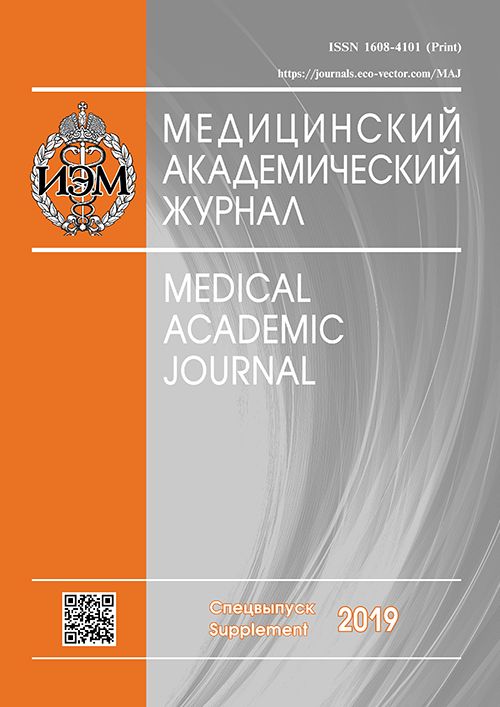ESPECIALLY CELLULAR IMMUNITY IN PATIENTS WITH TRAUMATIC BRAIN INJURY OF DIFFERENT SEVERITY IN ACUTE PERIOD
- Authors: Norka AO1, Kuznetsova RN1,2, Kudryavtsev SV1,3, Kovalenko SN4,5, Serebriakova MK3, Vorobyev SV6
-
Affiliations:
- Pavlov First Saint Petersburg State Medical University, Saint Petersburg
- Saint Petersburg Pauster Institute, Saint Petersburg
- Institute of Experimental Medicine, Saint Petersburg
- S.M. Kirov Military Medical Academy, Saint Petersburg
- City Hospital No. 26, Saint Petersburg
- Saint Petersburg State Pediatric Medical University, Saint Petersburg
- Issue: Vol 19, No 1S (2019)
- Pages: 96-98
- Section: Articles
- Published: 15.12.2019
- URL: https://journals.eco-vector.com/MAJ/article/view/19344
- ID: 19344
Cite item
Abstract
Full Text
About the authors
A O Norka
Pavlov First Saint Petersburg State Medical University, Saint Petersburg
R N Kuznetsova
Pavlov First Saint Petersburg State Medical University, Saint Petersburg; Saint Petersburg Pauster Institute, Saint Petersburg
S V Kudryavtsev
Pavlov First Saint Petersburg State Medical University, Saint Petersburg; Institute of Experimental Medicine, Saint Petersburg
S N Kovalenko
S.M. Kirov Military Medical Academy, Saint Petersburg; City Hospital No. 26, Saint Petersburg
M K Serebriakova
Institute of Experimental Medicine, Saint Petersburg
S V Vorobyev
Saint Petersburg State Pediatric Medical University, Saint Petersburg
References
- Xiong Y, Mahmood A, Chopp M. Current understanding of neuroinflammation after traumatic brain injury and cell-based therapeutic opportunities. Chin. J. Traumatol. 2018;21(3):137-151.
- Celia A. McKee and John R. Lukens. T cells in the central nervous system: messengers of destruction or purveyors of protection? Immunology. 2014;(141):340-344.
- O’Neil ME, Carlson K, Storzbach D, et al. Complications of Mild Traumatic Brain Injury in Veterans and Military Personnel: A Systematic Review. Washington (DC): Department of Veterans Affairs (US); 2013 Jan.
- Kudryavtsev IV, Borisov AG, Krobinets II, et al. Chemokine receptors at distinct differentiation stages of T-helpers from peripheral blood. Medical Immunology (Russia). 2016;18(3):239-250.
Supplementary files







